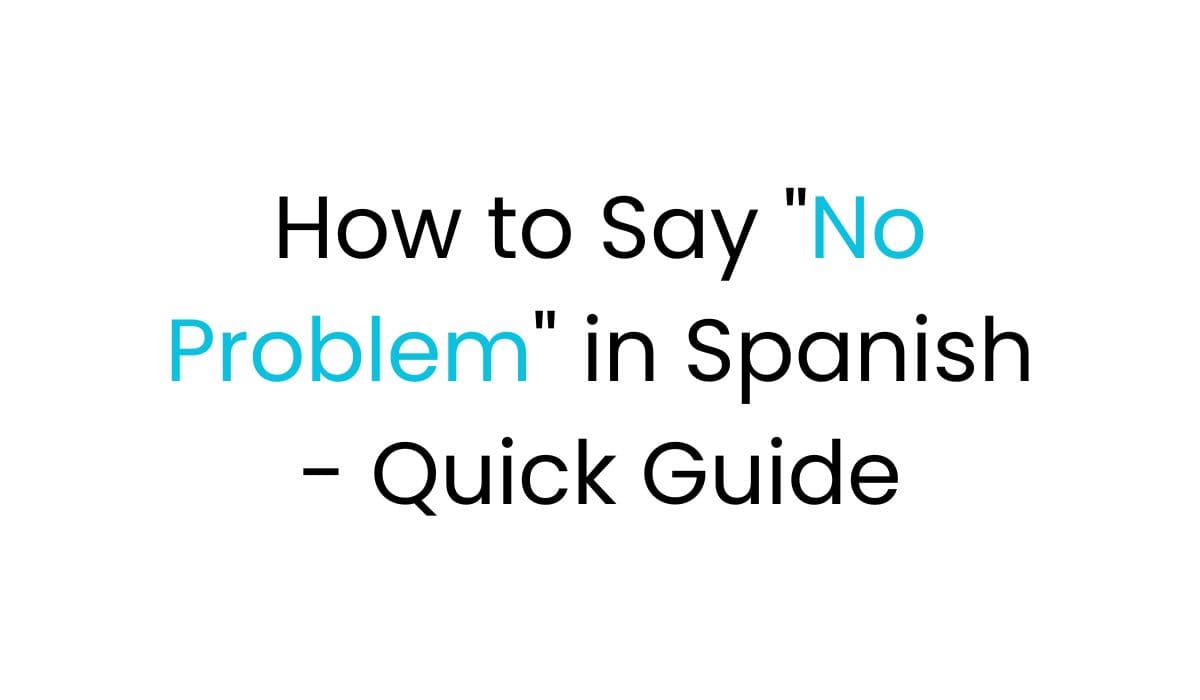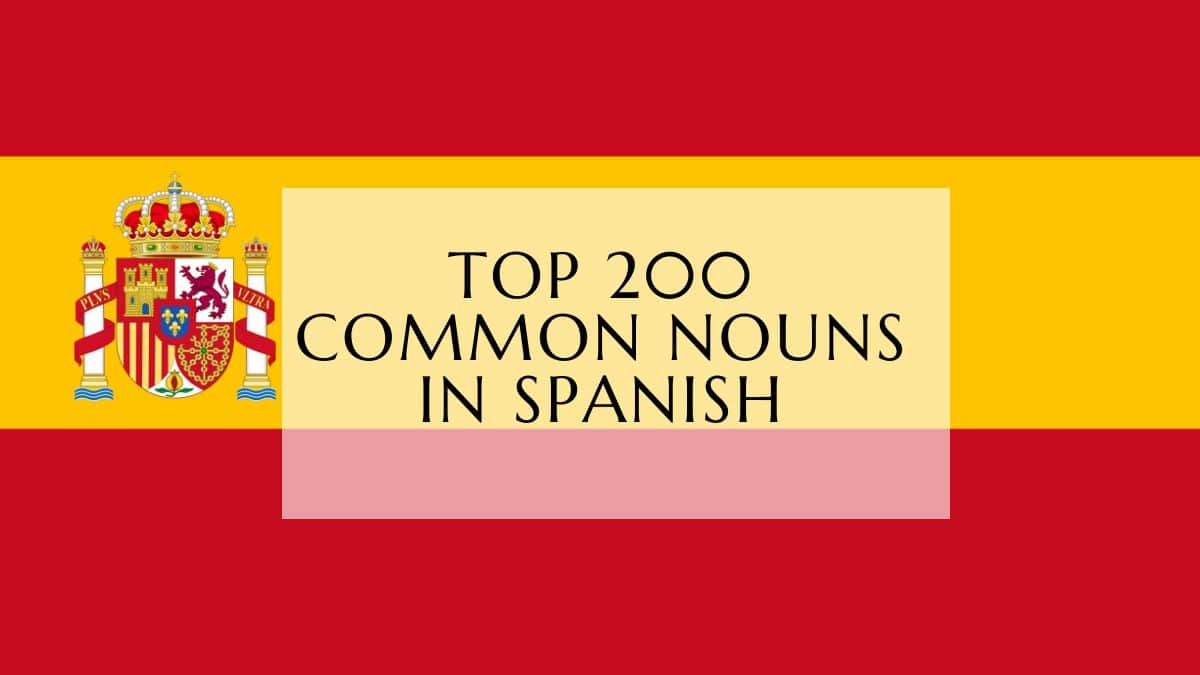Spanish is a global language spoken by about 559 million people. It has many ways to say “no problem.” Knowing these phrases can make your conversations smoother, whether you’re talking casually or formally. This guide will teach you key Spanish phrases for saying “no problem.” This will help you communicate better and feel more confident in different situations.

Introduction to Saying “No Problem” in Spanish
When learning Spanish, many English speakers get confused about saying “no problem”. They often think “no problemo” is a Spanish word, but it’s not. The right way to say it uses specific Spanish words and grammar.
We’ll look at the different ways to say “no problem” in Spanish. Knowing these phrases makes talking in Spanish easier and more confident.
Common Misconceptions about Saying “No Problem” in Spanish
Many think “no problemo” is a real Spanish word. It comes from the English “no problem” and is used to sound cool. But, it’s not really Spanish and might sound too casual or wrong in some places.
Some also believe “no problema” means the same as “no problem”. While it’s closer to the English phrase, it’s not the best choice. There are better ways to say it in Spanish.
To get good at saying “no problem” in Spanish, learn the phrases that fit better. This makes your Spanish sound more natural and right for the situation.
The Simplest Way: No hay problema
When you need to say “no problem” in Spanish, “no hay problema” is the easiest and most common phrase. It works well in both formal and casual situations. This makes it a favorite among Spanish speakers.
Formal and Informal Usage of “No hay problema”
The phrase “no hay problema” means “there is no problem.” It’s key to know that “hay” (there is/are) is a vital part. This sets it apart from the more casual “no problema.”
In formal situations, like at work or in business, “no hay problema” is best. It shows politeness and a willingness to help. On the other hand, “no problema” is more for everyday, friendly chats.
For instance, if a customer at a café asks for another napkin, the server might say, “No hay problema, enseguida le traigo uno.” (No problem, I’ll bring you one right away.) With a friend, you could say, “¿Puedes ayudarme con esto? ¡No problema!” (Can you help me with this? No problem!)
“No hay problema” is great for handling different social situations smoothly. It makes sure your answers are fitting and well-liked, in both formal and casual settings.
No pasa nada: Transmitting Tranquility
“No pasa nada” is a special phrase in Spanish that means “nothing happens.” It’s often used to tell someone not to worry. It’s like saying “no problem” but in Spanish.
When you’re in a situation where you want to say “no problem” in Spanish, “no pasa nada” is perfect. It helps make the atmosphere calm and relaxed. Saying this shows you’re not worried about the situation.
This phrase is great for making things less tense. You can use it when you’re sorry for a small mistake or when you’re okay with someone’s request. It tells the other person, “Don’t worry, everything is fine.”
Learning to use “no pasa nada” can really help you in Spanish conversations. It makes you seem more confident and reassuring. This can lead to better and more positive talks with people who speak Spanish.
A la orden: A Colloquial “You’re Welcome”
In the Spanish-speaking world, “a la orden” is a common way to say “you’re welcome.” It means “at your service” literally. This phrase is used to show a friendly and casual way of responding to thanks.
Regional Usage of “A la orden”
“A la orden” is often used as a “you’re welcome” in some Latin American regions. It’s common in Central America, Colombia, Peru, and Venezuela. In these places, it’s a big part of the way people talk, making interactions more welcoming and friendly.
In Colombia, a barista might say “a la orden” after you thank them. In Peru, a vendor might use it too after helping you. It’s a way to build a friendly vibe and respect in everyday situations.
Even though “a la orden” isn’t used everywhere in Spanish-speaking areas, it’s still useful to know. Using it can help you connect better with people from these regions. It shows you’re friendly and willing to help.
Learning phrases like “a la orden” can make you more confident in social and work situations. It shows you care about cultural differences and want to connect with others.
No importa: Saying “It Doesn’t Matter”
In Spanish, “no importa” means “it doesn’t matter” in English. It’s a way to say a situation or request isn’t a big deal. This phrase shows a relaxed and helpful attitude.
Using “no importa” is like saying “no problem” in Spanish. It means the speaker doesn’t mind helping or doing something. This makes conversations more friendly and positive.
For instance, if someone says sorry for asking you to do more, you could say, “No importa, puedo hacerlo” (It doesn’t matter, I can do it). This tells them their request is okay and you’re happy to help.
“No importa” works well in both formal and casual situations. You can use it with a colleague, a customer, or a friend. It shows you’re not bothered and you’re ready to help.
Adding “no importa” to your Spanish vocabulary shows you’re easy-going and ready to help. It makes you seem like saying “no problem” is the right answer in many situations.
Tranquilo/a: Staying Calm and Relaxed
In the vibrant world of Spanish, “tranquilo/a” means calm. It’s used to say “no problem.” It shows ease and tells you to stay calm when things get tough.
Using “tranquilo/a” means you adjust your tone and body language. It makes you seem calm. Always use “tranquilo” for men and “tranquila” for women. This shows you care about the person you’re talking to.
- For example, you might say, “Tranquilo, no hay problema” (Calm down, no problem) to a male friend who is feeling flustered.
- Alternatively, you could reassure a female colleague by saying, “Tranquila, lo tengo todo bajo control” (Don’t worry, I’ve got everything under control).
“Tranquilo/a” is great for making tense situations less tense. It shows you’re calm and in control. By saying “tranquilo/a,” you calm others down and show confidence.
“Tranquilo, mi amor, todo va a estar bien.” – Lyrics from the song “Ojalá Que Llueva Café” by Juan Luis Guerra, showing how “tranquilo” can calm someone down.
No problem in Spanish: No te preocupes/No se preocupe
In Spanish, “no te preocupes” and “no se preocupe” are key phrases for saying “no problem.” They bring comfort and understanding. They fit well in both everyday talks and formal chats.
“No te preocupes” is the informal way many Spanish speakers say “no problem.” It means “don’t worry” and is often used to ease someone’s worries. It tells someone that a certain issue or request is not a big deal.
“No se preocupe” is the formal version, used in polite or professional situations. This could be in customer service or when talking to someone more senior. It keeps things respectful while saying “no problem” or “don’t worry.” About 60% of Spanish speakers use it in formal situations to keep things polite.
Oualid Cheddadi is the founder of Lingualid, a platform that inspires independent language learners worldwide, regardless of the language they are learning. The name “Lingualid” is derived from the Portuguese word for “language,” “língua,” and the last three letters of Oualid’s name, “Lid.”



